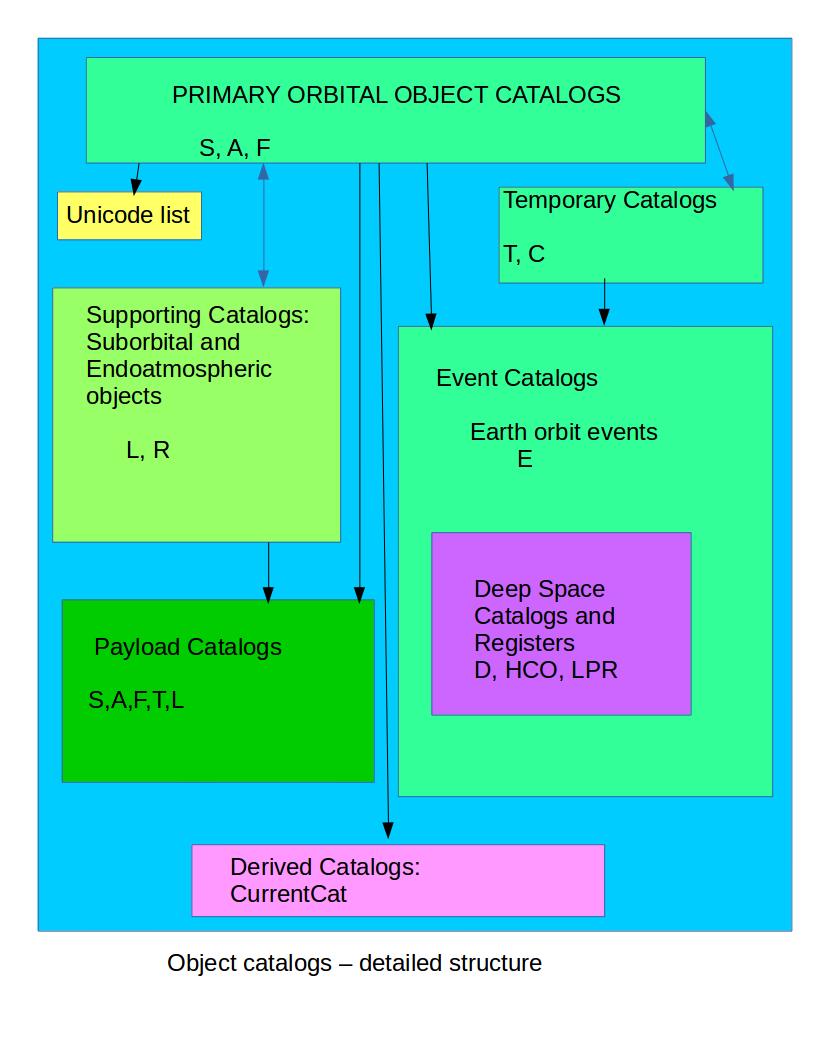GCAT Release 1.8.0 (2025 Nov 10) | Data Update 2025 Dec 27
The General Catalog of Artificial Space Objects (GCAT) makes public the full satellite database that
underlies
Jonathan's Space Report
The diagram below indicates the general structure of the database, which reflects
the data model of the information it describes.
An artificial space
object
(for short, in future simply `object') a satellite or spacecraft (active payload, rocket stage, discarded component,
piece of debris) outside the Earth's lower atmosphere. At a given time it can be in one of the following
object states:
- Attached to another object
- In free flight in the gravitational field of a world or astronomical body
- On the surface of an astronomical body
- Destroyed (in a collision, explosion or by burnup in atmospheric entry).
The main object catalogs define and list the first phase of each object.
Objects with more than one phase have their subsequent phases listed as entries in the event object catalogs.
A subset of objects are considered
payloads
and have additional data in the payload catalogs.
Each object (with rare exceptions) is associated with a single
launch,
described in the launch lists.
Each launch may be associated with many objects. The launch lists are the same as those in the already-published LVDB.
Each launch is associated with a
launch vehicle
and a
launch origin
(generalization of launch site), and both
launches and objects are associated with
organizations
of several kinds (countries, owners, manufacturers).
These associations are expressed by strings which link the launch and object catalogs with the supporting tables.
Figure: (1) Overall structure of GCAT. (2) Detailed structure of the object catalogs.
The supporting tables and the launch lists were published as GCAT release 1.0.2 in Aug 2020. Pre-release versions have been public
for a decade as part of the
Launch Vehicle Database (LVDB).
Release 1.1.0 is the first complete, formally versioned
and documented release to include the object catalogs.
For each payload, there is also a payload narrative and a payload event log. However, these are considerably
further from being ready for publication, so don't hold your breath.
Note that in fixed width versions of the table files, column names are truncated to the field width. Sorry about that!
Citing GCAT
GCAT is released under the Creative Commons CC-BY licence. You are free to use the data in GCAT as long as you include a citation to it. A suitable short citation is 'data from GCAT (J. McDowell, planet4589.org/space/gcat)'. A full citation is
McDowell, Jonathan C., 2020. General Catalog of Artificial Space Objects, Release 1.8.0 , https://planet4589.org/space/gcat

